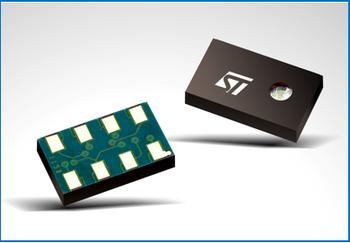 MEMS pressure sensors are playing an important role in today’s industry, and have been widely used in different fields because of their advantages such as happiness, low cost, and small size. The agency expects the market size of MEMS pressure sensors to be US$1.9 billion in 2012. In 2018 it was expanded to 3 billion U.S. dollars.
MEMS pressure sensors are playing an important role in today’s industry, and have been widely used in different fields because of their advantages such as happiness, low cost, and small size. The agency expects the market size of MEMS pressure sensors to be US$1.9 billion in 2012. In 2018 it was expanded to 3 billion U.S. dollars. MEMS pressure sensor is one of the earliest MEMS components appearing in electronic products. It is mainly used in the consumer electronics field and follows the successful models of similar accelerometers and gyroscopes to station smart phones and tablet devices; Yole Developpement believes that this model It will help the MEMS pressure sensor market to grow further. By 2018, the global MEMS pressure sensor will reach 2.8 billion units.
The number of consumer applications for pressure sensor shipments is estimated to reach 1.7 billion units in 2018 and will surpass the use of automobiles as the largest application of MEMS; Yole Developpement stated that although the average sales price of ASPs for consumer applications (ASP) will be higher than other applications It is low, but the prospects for prosperity in this area can be expected to be expected to bring about a 8% or more composite average annual growth rate (CAGR) for the global MEMS pressure sensor market.
Emerging Applications Bring Unlimited Business Opportunities
Automotive applications are still the largest market for MEMS pressure sensors, with mainstream applications including tire pressure sensing systems (TPMS), inlet pressure sensing devices (MAP), and atmospheric absolute pressure sensing devices (BAP); Yole Developpement notes that In the automotive, medical, industrial, and high-end applications MEMS pressure sensor market, the average growth rate is about 4 to 7%, while the average growth rate (value scale) of the consumer application market is as high as 25% (the growth rate of the shipment is 38 %), mainly due to the new business opportunities brought by smartphones and tablet devices.
MEMS pressure sensors have also found new applications in various fields, including in-cylinder pressure sensing, Continuous Positive Airway Pressure (CPAP) for medical use, and smartphones. New consumer applications such as tablet devices, such as the indoor navigation function of the Samsung Galaxy S lll; the above emerging applications are still in their infancy, but there seems to be growth potential. Yole Developpement believes that MEMS pressure sensors will find satisfaction in various fields. New development path for end-user needs.
MEMS manufacturers capture special applications, traditional pressure sensing technology is squeezed According to Yole Developpement's observation, the advantages of MEMS pressure sensors are gradually threatening other existing pressure sensing solutions, such as ceramic thick-film, ceramic capacitors (ceramic capacitive) and thin-film technologies. The market demand for low-cost, low-power, high-precision components for lower pressure sensing applications is behind the development of MEMS pressure sensors.
However, in some harsh environments, thin-film technology still has its needs, especially in high-temperature, highly corrosive media environments. For such applications, MEMS pressure sensor manufacturers are also developing suitable components such as silicon carbide (SiC). ) MEMS pressure sensor is an example.
The old and new manufacturers are contending, and the pie attracts many eateries.
Due to the large scale of the MEMS pressure sensor market, there are a number of manufacturers involved in it; Yole Developpement stated that this is one of the most decentralized markets in the industry, with over 50 suppliers rushing to eat big cakes. The current overall MEMS pressure sensor market consists of 50% revenue from the top five vendors Bosch, Denso, Sensata, GE Sensing and Freescale.
In the automotive, medical, industrial, and high-end applications markets, there are already leading suppliers based on the hills and smaller vendors following suit; while the emerging consumer applications market is attracting the interest of many traditional MEMS sensor suppliers. The automotive application market is currently a fiercely competitive area, with Bosch leading the way for a long time.
Yole Developpement pointed out that the ecology of the automotive industry's supply chain is very complex. It consists of depots, first-line automotive components and system suppliers (related to pressure sensors), fully packaged sensor manufacturers, and specialized manufacturers of MEMS and semiconductor components. composition. The agency's report details the value chain of different vendors and the in-depth analysis of the automotive application market.
While focusing on new business opportunities in consumer electronics applications, newcomers from the United States and China are also gearing up for investment; Yole Developpement stated that there are currently some local Chinese companies actively trying to cut into the MEMS pressure sensor market to meet China’s local automotive The huge demand for consumer applications.
Konica Minolata 1250,Konica Minolata 1050,Refacturing Konica Minolata,Konica Minolata C1085
Guangzhou Baiyin Co.,Ltd , https://www.machineprinter.com